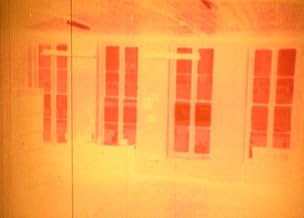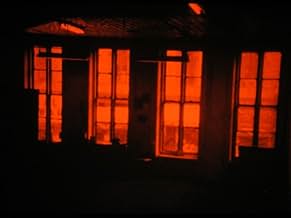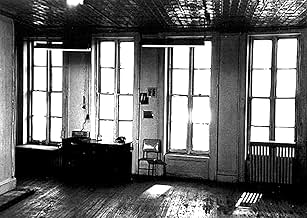Claimed by some to be one of the most unconventional and experimental films ever made, Wavelength is a structural film of a 45-minute long zoom in on a window over a period of a week. Very u... Read allClaimed by some to be one of the most unconventional and experimental films ever made, Wavelength is a structural film of a 45-minute long zoom in on a window over a period of a week. Very unconventional and experimental, indeed.Claimed by some to be one of the most unconventional and experimental films ever made, Wavelength is a structural film of a 45-minute long zoom in on a window over a period of a week. Very unconventional and experimental, indeed.
- Awards
- 1 win total
- Director
- Writer
- All cast & crew
- Production, box office & more at IMDbPro
Featured reviews
During the painfully slow zoom things happen in the room, though it's never busy or plot-driven. The highlight for me was when someone snapped on a radio and the Beatles "Strawberry Fields" played. Was that an underhanded way of saying that the film was a bad LSD trip?
Beyond the Beatles, the soundtrack consists of a long, annoying, screeching crescendo. It's awful, but try as I could, I was unable to catch a short nap during the film because of the soundtrack. For that it earns my praise. I mean, if Hollywood can't keep me awake with their drivel, then this film deserves some kind of award.
Like Hollis Frampton's ZORNS LEMMA, WAVELENGTH is the kind of picture made to be written about, not really endured. The glowing descriptions of it in critics' prose are more provoking than the actual artifact itself. Two things remain striking and puzzling about it thirty-two years later. Why did Snow choose to make a near-hour-long demonstration of the zoom lens? Why would tracking have been any different--is the movie meant to be a statement on a subjective appearance of changed perspective, while the viewer really remains static? Or was Snow just infatuated with the gimmickry of the zoom? (Each calibration churning closer to the photograph has a home-movie clunkiness.)
The other is the oddly hippie-dippie tone of Snow's inserted gimcrackery. From the charwoman-looking extra playing "Strawberry Fields Forever" on a radio, then lumbering off like a bit player in an Ed Wood number, to the acid-flashback reruns of just-passed scenes, to the freak colorizations of arbitrary moments (as if we jumped to the POV of a UFO), the ambience is much more Big Brother and the Holding Company than Robert Bresson. It's the same playing-with-a-gizmo amateurism that mars the images using people in Stan Brakhage's DOG STAR MAN, and it makes Snow's academic astringency look like a pose.
(WAVELENGTH showed up again, ripped off in the unlikeliest place: the track into a photograph that forms the "Twilight Zone" epilogue to Kubrick's THE SHINING.)
The forty-five minute long work is a single scene of a room, experimented with using various color filters, slowly and gradually zooming in to a photo on the wall of the room. Very little occurs onscreen except for the zoom, and in many ways it is really a series of film variations on the only focal point. That's not to say there is no onscreen action though; traffic can be seen occasionally moving outside the windows of the room, several women enter early on whilst a Beatles song is played, and the climax is a series of loud banging noises--as though a burglary is happening offscreen--before the great experimental filmmaker Hollis Frampton enters the shot and falls dead to the floor.
One other reviewer has interpreted that the film's goal is that to have almost nothing happen the viewer gets to appreciate more what does happen, and this is a very good point. In either case, it is a very interesting and abstract experimental work, as well as the ending which does a quite literal turn on the title, and an absolute must for fans of experimental cinema. It's boring only if you look at it as a scene of a room; it becomes interesting when you delight in the moments of action and I really liked it because it kept my interest despite the lack of events. I found that when watching it it was not a painfully boring watch like many say, because after a while you accept nothing big is going to happen and let the movie play out as it is. To be constantly bored at a movie for an entire forty-five minutes is quite unnatural, at least for me.
At a little under 45 minutes long, Wavelength is not an easy film to get through. It features a non-moving camera set in a large room, and nothing else. The camera captured the action that goes on in the room to create what Snow calls "a summation of my nervous system, religious inklings and aesthetic ideas." On the surface it is merely a stiff frame of three walls, a floor and a ceiling with the occasional, but brief, interaction of a human variety. But once you look closer you will realize that your eyes have deceived you.
Through the entire film, Snow has his camera zooming in at an extremely slow speed. After realizing this, your eyes will be fixated on the screen in a desperate attempt to convince yourself that you are not insane. I found the entire concept to be so emotionally exhausting and frustrating that once the film was over I could do nothing but watch it again. It was a pleasantly unpleasing experience that did nothing but expand my conception of conventional filmmaking.
I have to admit that the soundtrack behind the film was a bit confusing for me. It was nonexistent for most of the film, but all of a sudden WHAM! Imagine the most ear-piercing scream or squeal that you have ever heard. Now combine them to make the last half an hour of Wavelength. I honestly thought that I was going to disturb my neighbor's dog with the high pitched whistles and unexplainable wails that accompanied the actionless action. If you can handle the sounds you will be rewarded by the film.
With Wavelength, Snow created the most aesthetically praised work in all of avant-garde. His technique ultimately forced me into a starring contest with the screen. It was me versus the structure of a single room. It was me versus the nonexistent, but ever present, movement of the camera's lenses. I waited arrogantly for the film to flinch. It never did. And then it ended.
Did you know
- TriviaMichael Snow has stated that his intent with the film was for it to be "a summation of my nervous system, religious inklings and aesthetic ideas."
- Quotes
Woman in fur coat: I just got here, and there's a man lying on the floor, and I think he's dead.
- ConnectionsEdited into WVLNT: Wavelength For Those Who Don't Have The Time (2003)
Details
- Runtime45 minutes
- Color
- Aspect ratio
- 1.37 : 1
Contribute to this page






